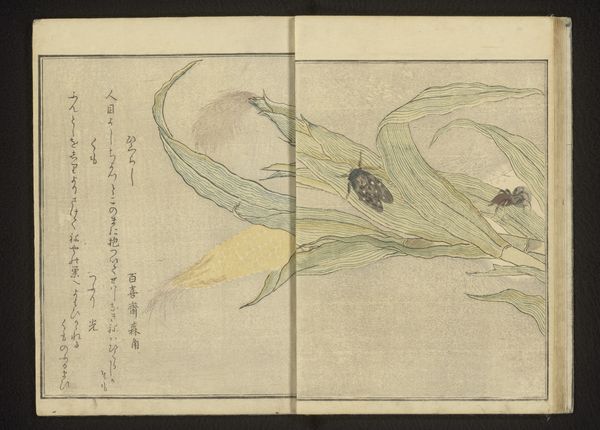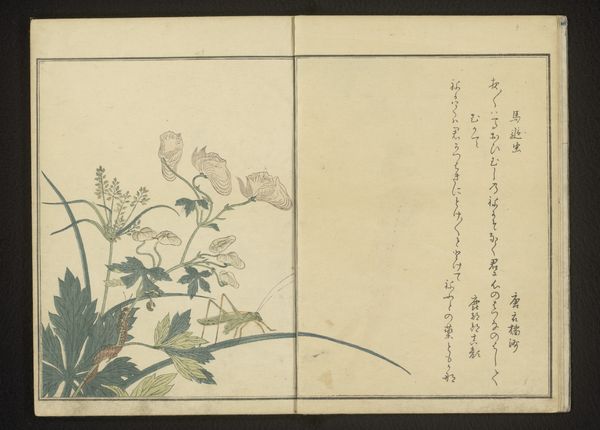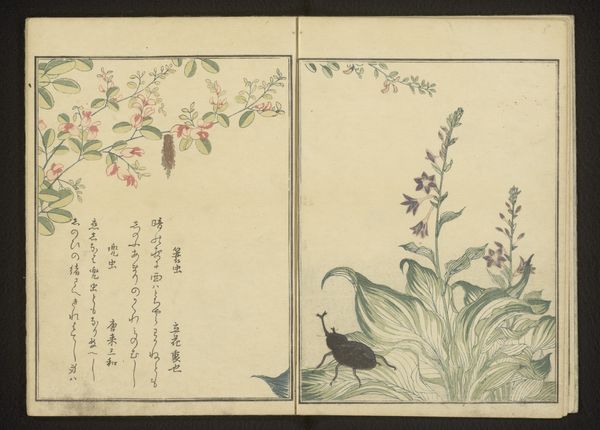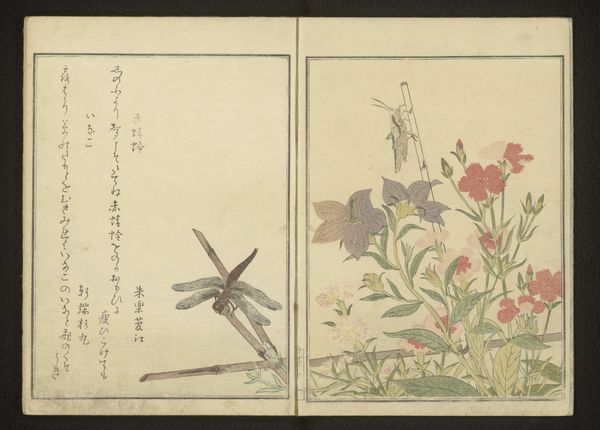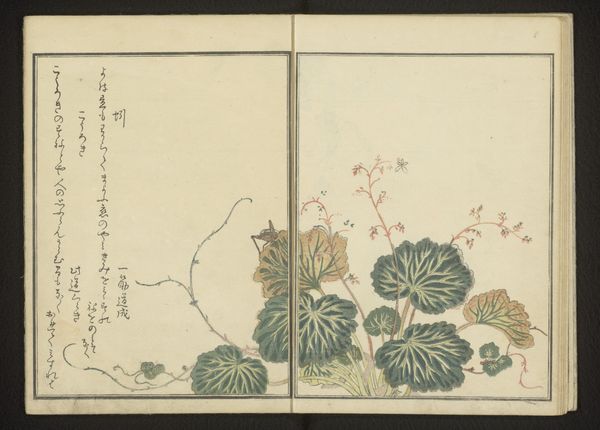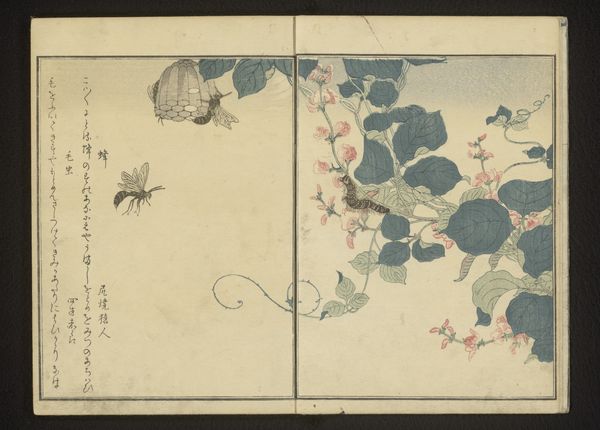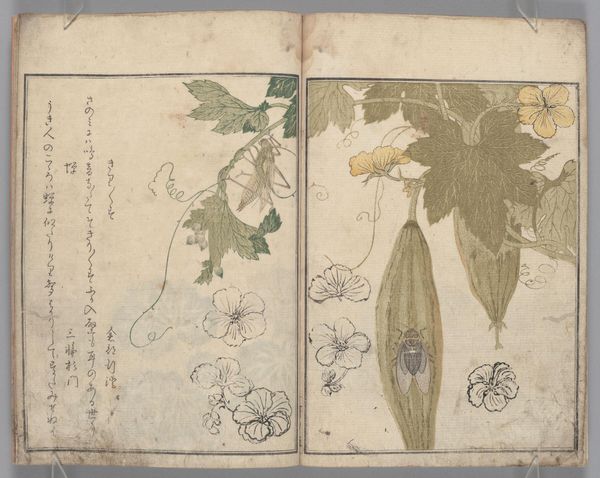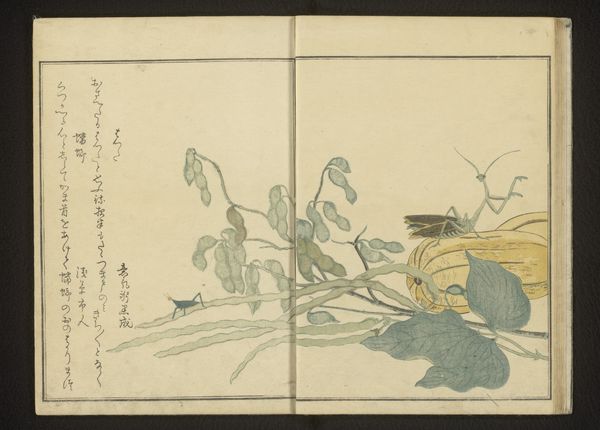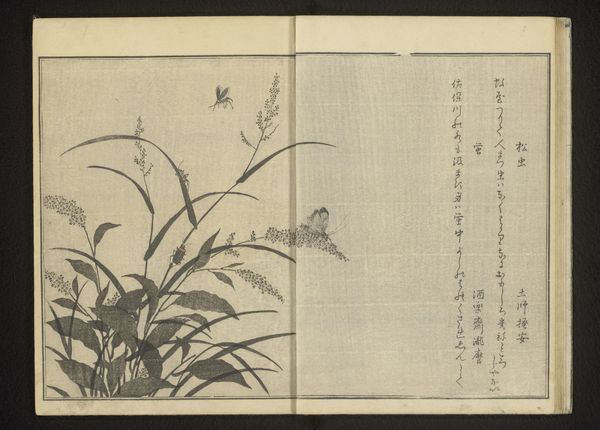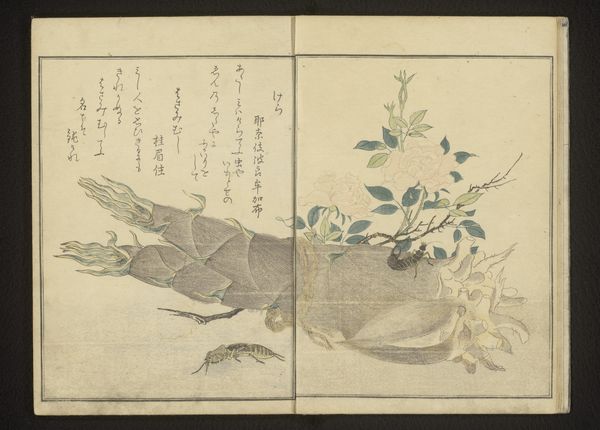
print, woodblock-print
# print
#
asian-art
#
ukiyo-e
#
woodblock-print
#
nature
Dimensions: height 250 mm, width 180 mm
Copyright: Rijks Museum: Open Domain
Curator: Welcome. We are standing before “Katydid and cicada on gourd,” a print made in 1788 by Kitagawa Utamaro, now in the collection of the Rijksmuseum. This work utilizes the ukiyo-e tradition through woodblock printing techniques. Editor: The initial impression is so delicate, so serene. The soft, muted palette creates a very peaceful mood, though the close arrangement of plant life and insect life gives it a certain density, perhaps indicating a hot summer climate. Curator: Indeed. Note the flat planes of color, the stylized depiction of the gourd, and the insects that characterize ukiyo-e. Utamaro has carefully considered the relationships between line, form, and the negative space surrounding each element. He directs the gaze using linear elements throughout, giving direction and stability to the work as a whole. Editor: The subject matter of these flora and fauna, arranged symmetrically with calligraphy, implies something about how humanity interacts with nature, and our own positioning within larger environmental ecologies. We might read this as commenting on our entanglement within our ecosystem, emphasizing symbiosis between lifeforms and environmental diversity. The text may be crucial to our overall understanding, if it provides any clues about interpreting our shared ecological vulnerability. Curator: Consider also the meticulous rendering of the insects and their positioning within the composition. There's a deliberate effort here to capture not only the appearance but also the essence of these creatures. Observe the careful arrangement, and delicate execution of each and every form. Editor: What about gender and nature in Utamaro's representation? How are notions of Japanese femininity constructed by naturalized metaphors present throughout East Asian art and philosophy? We might consider the traditional relationship between women and domestic labor as analogous to cultivating gardens—another place for labor, where beauty is brought from raw, organic, potentiality. How can this association serve a powerful purpose within social change movements? Curator: Ultimately, it showcases the artist's ability to transform the ephemeral moments of the natural world into a tangible form of artistic expression through the precise articulation of shapes and lines. Editor: Yes, the artwork evokes thoughtful observations regarding historical dynamics between humans, nature, gender, and cultural encoding during its particular time, giving us insights applicable to pressing conversations even today.
Comments
No comments
Be the first to comment and join the conversation on the ultimate creative platform.
